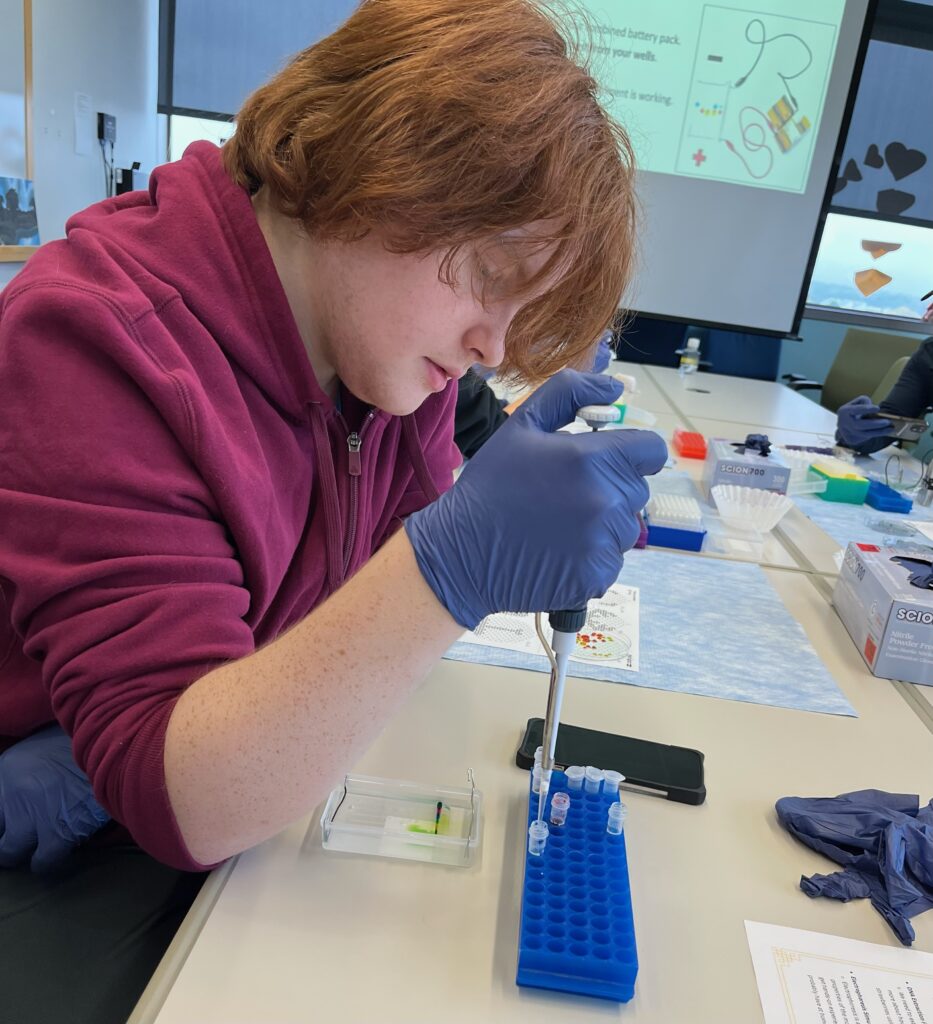A “rarer than rare” genetic puzzle: unpicking a family history of rare kidney disease
SPONSORED CONTENT
C3 glomerulopathy

For Lindsey Fuller and her family, their search for answers has spanned generations. Witnessing the devastating impact of kidney failure firsthand, they grappled with an elusive diagnosis that had robbed them of loved ones. But Lindsey’s persistence led to a breakthrough—a rare genetic mutation that had been silently passed down, now shedding light on her family’s medical history. Armed with this knowledge, Lindsey is driven to uncover the full scope of this hereditary burden, determined to forge a brighter future for those who will follow
Written by Nicola Miller
Interview with Lindsey Fuller, C3G Warrior
For Lindsey, the journey to understanding her family’s medical history has been a long and winding road which has left its mark across multiple generations. Her grandfather passed away from kidney failure and her own father underwent multiple transplants due to an unknown kidney disease, which, ultimately were unsuccessful and resulted in his untimely passing. Yet the underlying cause remained elusive. It wasn’t until Lindsey began experiencing her own health issues as a child that the pieces of the puzzle started to come together. Yet it would still be another two decades before those pieces finally aligned, confirming a dominant family history of the rare glomerular disease, C3 glomerulopathy (C3G). Something which Lindsey would go on to find out was “rarer than rare,” due to its pervasive inherited nature within her family.
Recurring infections, inflammatory symptoms, and the detection of protein and blood in her urine raised red flags for Lindsey’s attentive mother from as young as just 11 years of age. Despite initial tests showing normal kidney function, with the previous family history in mind, she persisted, determined to get to the bottom of her daughter Lindsey’s varied symptoms. A diagnosis of a “benign haematuria” was offered as the likely cause and no further investigation was offered. Lindsey largely “got on with her teen years” managing symptoms as best she could with no real follow up.
Fast forward to her mid-20s and the pregnancy with her first child—Lindsey experienced a marked increase in her symptoms with several inflammatory issues and chronic fatigue. Her kidney function and blood pressure became unstable, prompting closer monitoring by a nephrologist. Several years after the birth of her son, renewed testing indicated high antibody levels which led to a referral to a rheumatologist, who went down the path of an autoimmune condition. As testing concluded, Lindsey was subsequently diagnosed with Lupus which she was treated for over several years. These medications did little to alleviate her persistent kidney-related symptoms in the years that followed. In time this would prove to be a wrong turn, and Lupus would eventually be ruled out. With still no improvement of her symptoms, Lindsey next underwent a kidney biopsy which showed signs of post-infectious glomerulonephritis (PIGN)—a condition that had also been suspected in her father’s case.

When Lindsey’s son Travis was around nine years old, he too started showing signs of kidney problems, initially presenting as protein in his urine during his routine health checks—following a similar pattern to his mother. This prompted Lindsey to take renewed action and seek further evaluation and re-evaluation of the biopsy slides taken years earlier. Only this time, the passage of time yielded a result.


The pathologists, now armed with new information, confirmed a diagnosis of C3G, a little known about disease, which had only been identified and described as a distinct condition about a year prior. For Lindsey this was a mixed blessing.
“It was both a relief and a heartbreak to finally have a name for what we had been dealing with all these years,” Lindsey recalls. “On one hand, we could start to understand the root cause, but on the other, it brought an understanding that this burden had been carried by our family for decades, with devastating consequences.”
As Lindsey delved deeper into her family’s medical history, the picture became increasingly clear. The discovery of Lindsey’s C3G diagnosis prompted genetic testing, which revealed a novel variant in the C3 gene—a spontaneous mutation that had likely been passed down through multiple generations of her family, manifesting in different ways and degrees of severity. This revelation not only provided Lindsey with a clearer understanding of her own condition but also shed light on the medical histories of her father, grandfather and other relatives who had struggled with unexplained kidney issues. Due to the novel variant, Lindsey’s presentation was not typical of C3G which had further contributed to her protracted diagnosis journey. It was a bittersweet moment. Nevertheless, Lindsey’s diagnosis marked a turning point, opening the door to more targeted treatment options and the possibility of better managing the condition for herself and her son, who had also begun showing more active signs of the disease. It was a long-awaited breakthrough that would shape the course of Lindsey’s journey and her family’s future.
“Learning that this wasn’t just my story, but a generational saga, was both overwhelming and empowering,” Lindsey says. “I suddenly had a deeper understanding of my family’s past, but also a renewed sense of purpose in ensuring a brighter future for the next generation.”

With the diagnosis in hand, Lindsey became a tireless advocate, not only for her own health but for the wider C3G community. She connected with a research team at the University of Iowa, which has been at the forefront of studying this disease and eventually participated in a clinical trial for a promising new treatment. “The access to this level of expertise and the opportunity to be involved in cutting-edge research has been a game-changer,” Lindsey explains. “It’s given us hope that we can not only manage the condition but potentially even prevent the poor outcomes that my family has experienced in past generations.”
Lindsey’s determination has also led her to take on another crucial role—connecting with other C3G patients and their families. Through a thriving Facebook support group, founded by a fellow C3G Warrior, Lindsey engages with a community of individuals and families navigating the complexities of this rare disease, sharing resources, offering emotional support and collaborating on advocacy efforts. “It’s been incredible to see how this group has grown and the impact it’s had,” Lindsey says. “Knowing that you’re not alone in this journey, that there are others who understand what you’re going through, can make all the difference.”

As Lindsey looks to the future, she is driven by a deep sense of responsibility—not only to her own son, but to the generations that came before and those yet to come. By uncovering the genetic roots of C3G in her family, she hopes to pave the way for earlier diagnoses, more effective treatments, and ultimately, a brighter outlook for those affected. “This disease has cast a long shadow over my family, but I’m determined to turn that around,” Lindsey says with resolve.
“I want my son and any future grandchildren to have the opportunity to live full, healthy lives, free from the burdens we’ve carried. And I believe that by sharing our story, we can inspire others to keep pushing for answers and better outcomes.”
In the meantime, Lindsey has taken on the task of reconstructing her family tree, reaching out to distant relatives in the hope of uncovering more information. She explains, “My grandfather was one of eight siblings, and most of them died young, so we’ve lost touch with that side of the family over the years. I’ve started contacting the descendants of his siblings, just to let them know that if they’re sick and can’t figure out why, this might be something they want to look into.” This painstaking process of tracing her family’s lineage is deeply personal for Lindsey, as each new connection has the potential to shed light on the genetic origins of the condition that has left its mark on her family’s history. By piecing together this intricate family tapestry, Lindsey hopes not only to better understand her own journey but to empower others who may be grappling with the same rare diagnosis.


And for Travis, much to Lindsey’s relief, his current presentation is mild and as she expands “his kidney function has been good, and he has only experienced intermittent issues with blood and protein in his urine.” Due to the knowledge we have now, he is closely monitored and has benefitted from in-depth testing, which has observed that while over time his “complement system is becoming increasingly dysregulated, his clinical symptoms have not yet significantly worsened.” Both Lindsey and Travis (who is now in his twenties) remain vigilant and hopeful that they will have access to the best possible care and any emerging treatments—something which their forefathers did not benefit from—giving them a considerably improved prognosis compared to previous generations.
Articles within this digital spotlight are for information only and do not form the basis of medical advice. Individuals should always seek the guidance of their medical team before making changes to their treatment.
This digital spotlight has been made possible with sponsorship from Apellis Pharmaceuticals, Inc. The Apellis name and logo are registered trademarks of Apellis Pharmaceuticals, Inc. All opinions are those of the contributor. RARE Revolution Magazine retains all copyright.
https://rarerevolutionmagazine.com/digital_spotlights/glomerular-diseases/












